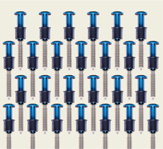Attached files
| file | filename |
|---|---|
| 8-K - FORM 8-K - Howmet Aerospace Inc. | d348009d8k.htm |
Exhibit 99
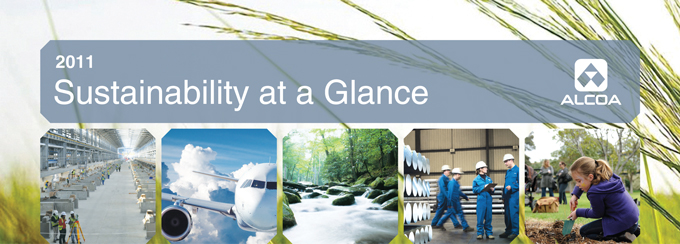
| u | 2011 Highlights |
| • | We introduced Reynobond® with EcoClean™, the first coil-coated architectural panel that helps clean itself and the air around it. |
| • | We reduced the total carbon dioxide intensity in our Global Primary Products business by 23% and our global freshwater-use intensity by 21% between 2005 and 2011, exceeding our 2020 targets and allowing us to bring our 2030 goals forward to 2020. |
| • | For the first time in a calendar year, we had zero employee fatalities. |
| • | Alcoa and Alcoa Foundation invested US$38 million in community programs. |
| • | We were included in the Dow Jones Sustainability Index for the tenth consecutive time. |
| u | Sustainability Strategy |
At Alcoa, sustainability is defined as using our values to build financial success, environmental excellence, and social responsibility in partnership with all stakeholders in order to deliver net long-term benefits to our shareholders, employees, customers, suppliers, and the communities in which we operate.
Overseeing the integration of our sustainability approach into our core business strategy is a multi-layered structure headed by our chief sustainability officer and supported by a set of long-term strategic targets for our businesses and locations to integrate all aspects of sustainability into their day-to-day operations.
Sustainability Scorecards align sustainability targets with business strategy across every business and provide a dashboard to measure progress against key near-term sustainability metrics. Each business has also developed a roadmap to lay out the process steps, business decisions, and technical improvements necessary year-by-
year to realize the longer-term objectives that it had committed to deliver.
To ensure the integration of sustainability into our core business strategies, our CEO has championed the linkage between pay for performance and the achievement of specific sustainability objectives. During 2011, 20% of our variable compensation was tied to achieving significant aspects of our sustainability targets.
We were recognized for our sustainability efforts in 2011 through inclusion in the Dow Jones Sustainability Index for the tenth consecutive time and the Nasdaq OMX CRD Global Sustainability Index. We were also named to both the Carbon Disclosure Project’s Disclosure Index and its Performance Index. Only 11 Fortune 500 companies were named to this index in 2011.
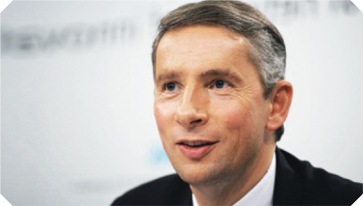
“Sustainability is not a catalog of processes, nor merely a philosophy at Alcoa. Rather, it is part of everything we do.”
| Klaus Kleinfeld Alcoa Chairman and Chief Executive Officer |

|
1

Through their light weight, high strength, durability, and recyclability, our products are inherently sustainable and improve the sustainability of our customers’ products.
| u | Product Design & Life Cycle |
| Our primary aluminum and many other products hold Cradle to Cradle® Certification, assuring customers that we are continuing to improve the sustainability of our metal, from initial production through use and then recycling. |
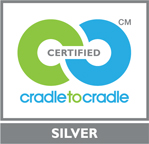
|
We are utilizing life cycle assessment and other sustainability tools to conceive, develop, and bring to market sustainable products in each of our major market segments. In 2011, for example, we conducted a life cycle assessment on pet food cans with Silgan Containers. Results showed that for every 10% increase in the cans’ recycling rate, there is a carbon footprint reduction of 6.6%.
| u | Transportation |
Aluminum is the ideal material for transportation applications, helping reduce the overall weight of an aircraft, automobile, or commercial vehicle to improve fuel economy and significantly reduce emissions during the use phase.
For the next generation of single-aisle aircraft, we have developed new alloys and technologies that can:
| • | Lower the weight of the plane by up to 10% versus composite-intensive planes; |
| • | Allow for a 12% increase in fuel efficiency, on top of the 15% from new engines; and |
| • | Lower fuel use per seat by approximately 50% compared to the last generation and up to 16% compared to the current generation. |
| Our aluminum automotive, truck, and bus solutions can be up to 50% lighter than steel. For every one kilogram (2.2 pounds) of aluminum used to replace higher density steel or iron components in a car, there is the potential to save 20 kilograms (44 pounds) of carbon dioxide (CO2) emissions. In addition, 18 tons of CO2 emissions are saved for every one ton of aluminum added to a trucking fleet. |

|
| u | Packaging |
One of the most sustainable solutions for eliminating packaging waste is using aluminum in food and beverage packaging. The benefits are significant:
| • | Aluminum cans are recycled and back on the store shelf in only 60 days. |
| • | The aluminum can is the most recycled beverage container in the world. |
| • | Today’s aluminum can is manufactured with 30% lower greenhouse gases and 30% less energy compared to a can manufactured in 1993. |
| • | At 13 grams (0.5 ounces), the aluminum can is 15% lighter than in 1993, helping reduce transportation fuel use and emissions. |
| • | The U.S. aluminum can’s total recycled content averages 68% compared to 30% for glass and 3% for PET, making it the highest of any beverage container. |
We operate the largest can reclamation facility in the world in Alcoa, Tennessee, in the United States. This facility remelts enough used beverage containers to make billions of new aluminum cans each year. We also operate the largest can reclamation facility in the southern hemisphere at our Yennora facility in Australia.
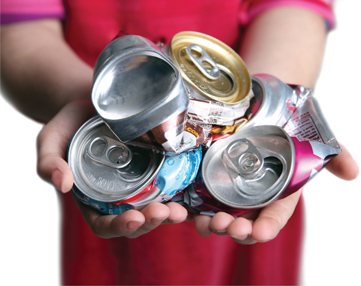
Visit www.alcoa.com/sustainability for more in-depth information and performance data. 2
| u | Building & Construction |
When used in buildings, aluminum can enhance energy efficiency, reduce carbon emissions, and help achieve green-building standards. For example, a six-story office building using aluminum can reduce energy use by 20%, eliminating 157 tons of CO2 emissions annually.
In 2011, we launched Reynobond® with EcoClean™, the first coil-coated architectural panel that helps clean itself and the air around it. The economically viable product reduces maintenance costs and helps with the decomposition of smog and other pollutants, such as dirt and diesel fumes, that cling to building surfaces. Almost 930 square meters (10,000 square feet) of Reynobond with EcoClean have the approximate air-cleansing power of 80 trees.
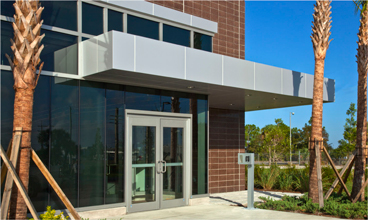
Reynobond with EcoClean
| u | Consumer Electronics |
Consumer electronics represents a fast-growing market for aluminum, with overall consumption expected to increase 46% between 2011 and 2014.
Aluminum offers many performance and design advantages for consumer electronics, including light weight, recyclability, durability, improved heat conduction, production efficiencies, and aesthetics.
Our EcoWiseTM aluminum alloy reduces the carbon footprint of handheld and mobile electronic devices while meeting or exceeding the mechanical, surface and performance properties of traditional alloys.
To help address end-of-life challenges associated with consumer electronics, we are a minority investor in Electronic Recyclers International, the largest U.S. recycler of electronic waste.
| u | Industrial & Engineered |
Although the majority of our business involves the production of aluminum products, we are also a leader in several multi-
material businesses that substantially contribute to sustainability in the industrial and engineered sectors.
We are the world’s leading producer of blades and vanes made of advanced super alloys for the high-temperature environments in jet engines and industrial gas turbines. These products help engines and turbines run at hotter temperatures, improving the overall energy efficiency and reducing noise, emissions, and the overall carbon footprint.
| We are also a leading manufacturer of fastener systems made of aluminum, corrosion-resistant steels, titanium, super alloys, and more for the aerospace, automotive, and commercial transportation markets. A million of our aerospace fasteners fly on every Airbus A380, the world’s largest passenger plane. |
Aerospace fasteners |
| u | Recycling |
Because aluminum is infinitely recyclable, approximately 75% of all the primary aluminum ever produced since 1888 is still in use today. Recycling aluminum only uses 5% of the energy required to make new aluminum ingot. In addition, recycled aluminum creates 95% less greenhouse gas emissions than new aluminum.
We have an aggressive goal to raise the U.S. used beverage can recycling rate to 75% by 2015 and the global recycling rate to 90% by 2030. The rates stood at 58% and 73% in 2010, the most recent year data were available.
| We are also working with our customers in all of our major market segments to bring back recyclable material for use as a secondary raw material feedstock. |

|
Visit www.alcoa.com/sustainability for more in-depth information and performance data. 3

Efficient use of resources, such as water and energy, and effective control of emissions, waste, and land use have positioned us as an industry leader in minimizing our environmental footprint.
| u | Climate Protection |
For nearly two decades, we have been actively engaged in efforts to reduce greenhouse gas emissions. Our most recent goal, established in 2010, is to reduce 2005 levels of total CO2 intensity in our Global Primary Products business (refining and smelting) by 20% by 2020 and 30% by 2030.
We achieved a 23.1% intensity reduction in our Global Primary Products business through 2011. Due to that progress, we decided to bring forward our 2030 goal of a 30% reduction to 2020 and increase our 2030 goal to a 35% reduction.
Total greenhouse gas emissions (CO2 equivalents) across all Alcoa businesses equaled 47.25 million metric tons for 2011. PricewaterhouseCoopers LLP again provided assurance on our consolidated greenhouse gas emissions data.
Global Primary Products
Greenhouse Gas Emission Intensity
Metric tons of CO2 equivalents (CO2e) per ton of production
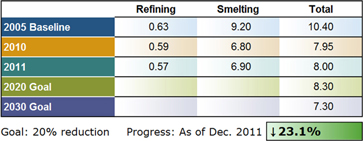
Data changes from prior reporting were due to improvements in data reporting. The total represents the combined impact of refining a nd smelting operations indexed to tons of primary metal production (refining is included at a ratio of 1.9 tons of alumina to smelted metal). These two processes and their associated power supply represent approximately 90% of Alcoa’s total emissions. Beginning in 2012, the new targets will be 7.28 for 2020 and 6.76 for 2030.
| u | Energy |
We are committed to reducing the energy requirements for all of our operations and have set the following long-term strategic targets:
| • | From a 2005 baseline, 10% reduction in the energy intensity of Global Primary Products by 2020; 15% by 2030; and |
| • | From a 2005 baseline, 20% reduction in the energy intensity of all other businesses (Global Rolled |
| Products and Engineered Products and Solutions) by 2020; 30% by 2030. |
Our Global Primary Products business reduced its total energy intensity 2% in 2011 against its 2005 baseline, positioning it to meet the 10% reduction goal by 2020. The Global Rolled Products business saw an 8% decline compared to baseline, while Engineered Products and Solutions achieved a 7% decrease compared to 2010.
Energy Intensity—Global Rolled Products
Gigajoules per metric ton of aluminum produced
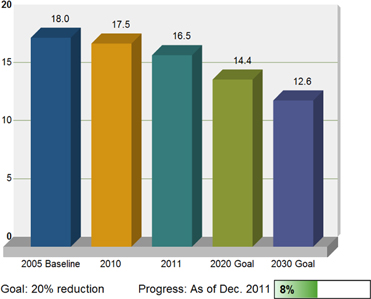
Data changes from prior reporting were due to improvements in measurement and reporting methods.
| u | Waste |
Under our strategic sustainability targets, we are focusing our waste efforts on what we consider our most important issues—bauxite residue and landfilled waste.
Bauxite Residue
Bauxite residue is a byproduct of the alumina refining process that is stored in impoundments that are capped and re-vegetated when full. Our long-term strategic targets for the material, and our progress against them through 2011, are:
| • | From a 2005 baseline, 15% reduction in bauxite residue land requirements per unit of alumina produced by 2020; 30% by 2030. Achieved 9%. |
| • | Rehabilitate 30% of total residue storage area by 2020; 40% by 2030. Achieved: 15%. |
Visit www.alcoa.com/sustainability for more in-depth information and performance data. 4
| • | Recycle or reuse 15% of residue generated by 2020; 30% by 2030. Achieved: 0%. |
| To meet these goals, we are continually improving our residue storage practices and investigating ways to modify the residue, specifically decreasing its alkalinity to further lessen its potential environmental impact while also enhancing its prospects of reuse. |

|
Landfilled Waste
Our current strategic target for landfilled waste is a 75% reduction by 2020 and 100% by 2030 from a 2005 baseline. The goal excludes certain large-volume process waste streams from refining and power generation that are addressed through separate programs.
In 2011, we achieved a 19% decrease from the baseline. We did see an increase in waste volumes as we permanently decommissioned certain facilities during the year.
Landfilled Waste
Thousands of metric tons
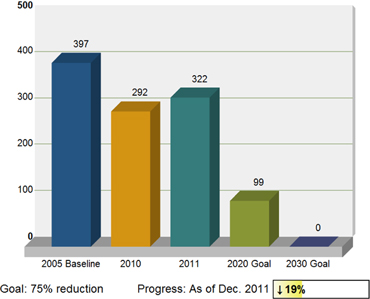
Data changes from prior year were due to improved measurement and reporting.
| u | Water |
Water is an important raw material for Alcoa, with the major uses occurring in our refining and ingot-casting processes. Across our operations, we work to ensure water efficiency but place an even greater focus on conservation in regions where water availability is most sensitive.
We used 109 million cubic meters of water in 2011, slightly above our 2010 usage due to the restarting of idled capacity. However, we reduced our freshwater-use intensity (consumption per unit of production) by 21% versus 2005 levels, exceeding our 2020 goal of a 10% reduction and allowing us to bring our 2030 reduction target forward to 2020.
Freshwater-Use Intensity
Cubic meters of water per metric ton of production
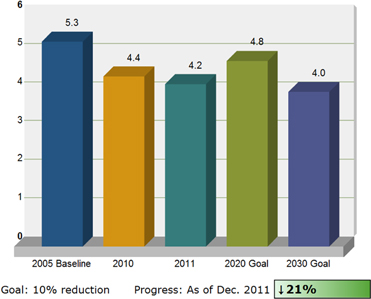
Data changes from prior reporting were due to improvement in water-usage measurement methods. Water usage from power utilities is excluded from the intensity metric, which reflects only our manufacturing operations. Because of the variability in the basis for measuring production in our businesses, these values represent a metric calculated by taking each business intensity measurement indexed to production. Smelting production is indexed to metric tons of aluminum produced. Refining production is calculated at 1.9 times smelting production in metric tons of aluminum produced. Fabrication production is indexed to metric tons of product rolled. Engineered Products and Solutions data are not included. Beginning in 2012, the new targets will be 4.0 for 2020 and 3.7 for 2030.
| u | Mine Rehabilitation |
Our overall mine rehabilitation objective is to reduce our collective mining footprint to the minimum required for efficient resource recovery. To drive our progress, we have established the following quantifiable goals:
| • | By 2020, achieve a rolling five-year corporate-wide ratio of 0.75:1 for new active mining disturbance to rehabilitation; and |
| • | By 2030, maintain a ratio of 1:1 to ensure no net expansion in new disturbance. |
Overall disturbance, including new active mining areas and infrastructure development, totaled 1,532 hectares (3,786 acres) in 2011. Approximately 1,170 hectares (2,891 acres) of that total was associated with our Western Australia mines. Rehabilitated land totaled 1,027 hectares (2,538 acres).
| Based on actual data from 2010 and 2011 combined with projections for the following three years, we believe that our corporate- wide five-year average ratio will be approximately 0.86:1 in 2014, putting us on a path to meet the 2020 goal. |

|
Visit www.alcoa.com/sustainability for more in-depth information and performance data. 5

We place great value on our employees and suppliers and hold each responsible for working in a manner that adheres to the highest standards for human rights and is safe, responsible, ethical, and focused on sustainability.
| u | Human Rights |
Alcoa’s Human Rights Policy comprises policies related to children and young workers, freedom of engagement, equality of opportunity, compensation, freedom of association, and relationships with indigenous people.
| We endorse the United Nations Global Compact with respect to human rights. The compact’s 10 principles provide that businesses should support and respect the protection of internationally proclaimed human rights and ensure that they are not complicit in human rights abuses. |

|
We have a mandatory human rights training course that key managers must complete as part of their standard curriculum. In 2012, we are rolling out human rights training to supervisor-level employees who have direct supervisory management over employees in our plants.
| u | Our People |
Our people are the foundation of our success throughout the world, and we foster a high-performance culture that develops talent and promotes teamwork.
To achieve our workplace vision, our human resources function is partnering with the business units to set specific actions, timetables, and metrics that provide direction and measurement against progress. There are challenges that must be overcome, and these include the global nature of the company, differing cultural issues and governmental regulations, and our decentralized structure.
In 2011, up to 20% of our variable compensation plan was tied to achieving significant aspects of our sustainability targets. The targets focused on reductions in carbon dioxide emissions due to process improvements and improved energy efficiency; safety; and diversity representation in our workforce. Specifically, these targets and their share
of the variable compensation plan at the corporate level were:
| • | CO2: 5% |
| • | Safety: 5% |
| • | Diversity: 10% |
Our 2011 achievement payouts at the corporate level were 4.4%, 6.8%, and 10.3% for CO2, safety, and diversity targets, respectively.
Number of Employees
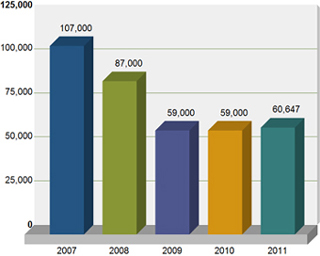
Exact, rather than rounded, numbers provided as of 2011. Alcoa does not aggregate global data differentiating part-time from full-time employees. Decline in employment numbers primarily was due to a series of divestitures and restructuring programs.
| u | Health & Safety |
Our ideal state is zero work-related illnesses and injuries and improved health and well-being for all employees.
In 2011, we achieved our first full calendar year without an employee fatality. Tempering this achievement, however, was the death of a contractor at our San Ciprían refinery in Spain.
Progress toward our goal of zero lost workday incidents remained relatively flat during 2011, and we ended the year with a lost workday (LWD) rate of 0.12 and a total recordable incident rate (TRIR) of 1.24. While the lack of progress on the LWD rate is disappointing, we must recognize that both of these rates are still significantly below the U.S. manufacturing average.
In early 2012, we began using the days away, restricted, or transferred (DART) rate to further focus our incident prevention efforts on eliminating the more serious incidents first.
| Visit www.alcoa.com/sustainability for more in-depth information and performance data. 6 |
In 2011, we successfully launched a new Alcoa incident management system called Alcoa Incident to report and analyze real-time data on injuries, illnesses, environmental incidents, and more occurring at Alcoa locations globally.
To build upon our existing wellness initiatives, we will be launching an expanded global health and wellness program for our employees and their families in 2012.
Incident Rates

Lost workday incident rate represents the number of injuries and illnesses resulting in one or more days away from work with or without days of job transfer or restrictions per 100 full-time workers. Total recordable incident rate represents the number of injuries and illnesses resulting in days away from work, job transfer or restriction, medical treatment, or other recordables per 100 full-time workers.
| u | Supply Chain |
As an important business partner, our suppliers play an integral role in helping us achieve our sustainability goals. To drive sustainability within our supply chain, we have invested resources in our global and regional supplier sustainability programs, human rights policies and disclosures, and anti-corruption monitoring and due diligence processes.
Our Global Supplier Sustainability Program focuses on our key suppliers that pose the greatest sustainability opportunities and risks to Alcoa. Some of the sustainability risks that we consider include: suppliers of commodities that contribute
most to Alcoa’s carbon footprint; suppliers with preferred status; sole sources of supply; suppliers located in emerging or high-risk countries; and suppliers providing regulated commodities.
The program consists of four components:
| • | Communicate expectations: We clearly define sustainability expectations in our supplier sourcing, qualification, and management activities. |
| • | Assess suppliers: We conduct assessments of our key suppliers to evaluate the maturity of their sustainability programs and to determine where improvements are needed. |
| • | Develop and educate: For suppliers that fall into the emerging or lagging areas, we educate them regarding our sustainability expectations and provide them with access to tools to develop and improve their programs. |
| • | Monitor: The suppliers in the emerging and lagging categories are reassessed on an annual basis so that program progress can be measured and monitored. |
The assessments we completed in 2011 provided us with a baseline of the maturity of our key suppliers’ sustainability programs. From the assessments, we were able to conclude that 68% of our key suppliers are rated as either leading or active.
2011 Supplier Assessment Results
Percent

Alcoa Global Supplier Sustainability Program
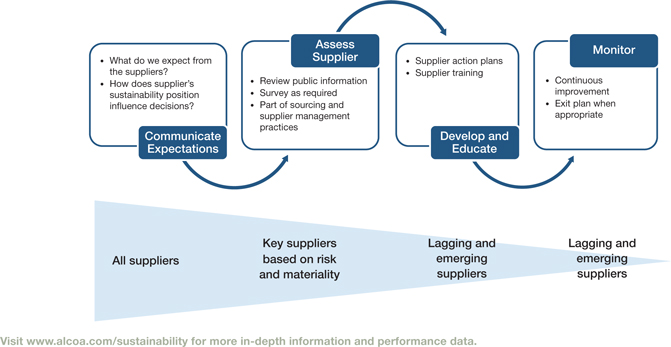
7

| u | Community Investment |
In 2011, the combined community giving of Alcoa and Alcoa Foundation reached US$38 million. To enhance the communities where Alcoa operates, Alcoa Foundation provided more than US$21 million in grants to nonprofit organizations focused on improving the environment and educating and training individuals for careers in science, technology, engineering, math, and manufacturing. Alcoa and Alcoa-related foundations contributed an additional US$16.9 million to support projects and partnerships with non-governmental and nonprofit organizations around the world.
Alcoa and Alcoa Foundation Combined Community Giving
Millions of U.S. dollars
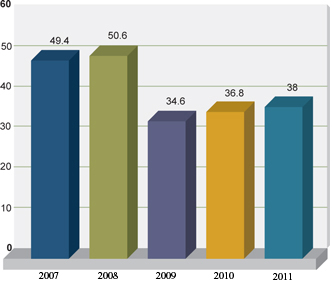
| Our employees achieved record community engagement in 2011, with 56% participating in our annual Month of Service in October. In total, our global workforce volunteered in excess of 900,000 hours in 2011, averaging more than 16 hours per employee. This is the equivalent of 475 people working full time for one year. |

|
Our 2012 goal is to reach one million volunteer hours.
| u | Stakeholder Engagement |
We understand the importance of having transparent and regular dialogue with all of our stakeholders to ensure that we both understand their issues and concerns and provide them with information.
The principal way we manage engagement with stakeholders at the community level is through the Alcoa Community Framework. Further refined in 2011, the framework clearly articulates our expectations for open and transparent dialogue with stakeholders in the communities where we are located.
Through our corporate-level stakeholder engagement process, we also develop relationships with appropriate stakeholders at the regional or global level.
Some of the key community and stakeholder issues that were raised during 2011 are highlighted below. A more complete listing is available in our online reporting.
2011 Stakeholder Issues
| Location |
Issue |
Resolution | ||
| Clarendon and Manchester, Jamaica |
Residents demanded compensation for what they considered a dust nuisance affecting their homes. | We engaged an independent assessor who assessed the impact on residents’ houses and, using a formula agreed upon with the residents, determined the level of compensation each received. | ||
| Moengo, Suriname | New mining activities close to the tribal village of Adjoemakondre. | We consulted directly with village leaders and had an independent consultant conduct a comprehensive study into the needs of the village. On December 20, 2011, both parties entered into a written agreement covering the mining and implementation of development projects. | ||
| Tennessee, USA | Permanent closure of the smelter at the Tennessee Operations, which had been curtailed since 2009. | We created a Redevelopment Task Force with community stakeholders, including state and local government and economic development officials and Tennessee Valley Authority representatives, to gain input and assistance regarding reuse of the smelter site. | ||
| Forward-Looking Statements: This report contains, in addition to historical information, statements concerning Alcoa’s expectations, goals, targets, strategies, or future performance. These “forward-looking statements” are subject to a number of known and unknown risks and uncertainties. Some of the factors that may cause Alcoa’s actual results to differ materially from those expressed or implied in the forward-looking statements include changes in aluminum industry or global economic conditions generally, factors affecting Alcoa’s operations, such as unavailability of energy, equipment outages, natural disasters, or other unexpected events, changes in the regulatory environment, the impact of reductions in Alcoa’s capital expenditures, Alcoa’s inability to realize expected benefits from its productivity improvement, sustainability, restructuring, technology, and other initiatives, and the other risk factors summarized in Alcoa’s Form 10-K for the year ended December 31, 2011 and other SEC reports. |

|
8
Stock widget
Investing forum
Howmet Aerospace Inc. Reports
- 02/19/2016 - 10-K
- 02/28/2017 - 10-K
- 02/23/2018 - 10-K
- 02/26/2020 - 10-K
- 02/16/2021 - 10-K
- 10/23/2009 - 10-Q
- 04/22/2010 - 10-Q
- 07/22/2010 - 10-Q
- 10/23/2014 - 10-Q
- 04/23/2015 - 10-Q
- 07/22/2015 - 10-Q
- 10/22/2015 - 10-Q
- 05/05/2016 - 10-Q
- 07/29/2016 - 10-Q
- 11/09/2016 - 10-Q
- 05/01/2017 - 10-Q
- 08/02/2017 - 10-Q
- 11/06/2017 - 10-Q
- 05/01/2018 - 10-Q
- 08/02/2018 - 10-Q
- 11/01/2018 - 10-Q
- 05/07/2020 - 10-Q
- 11/09/2020 - 10-Q
- 05/06/2021 - 10-Q
- 08/04/2021 - 10-Q
Also read
- Cohbar, inc. - 8-k, regulation fd disclosure financial statements and exhibits
- Denver parent corp - 8-k, entry into a material definitive agreement termination of a material definitive agreement creation of a direct financial obligation or an obligation under an off-balance sheet arrangement of a registrant

